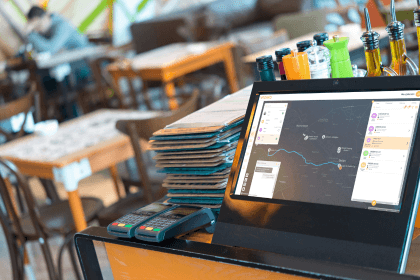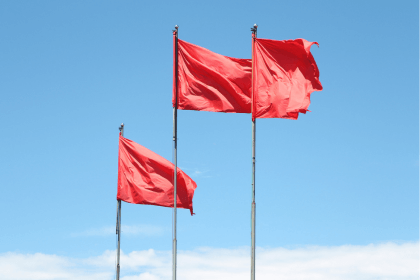
How to make restaurant food delivery profitable
January 4, 2023
Unlock the secrets and discover the sweet spot for self-delivery (and what happens beyond that) for your restaurant today!

The landscape of delivery has undergone significant transformations in the last decade.
Gone are the days when restaurant owners had to personally manage deliveries or hastily assign kitchen staff as makeshift delivery service drivers.
Luckily, the emergence of what we could coin life-changing technology such as Google Maps (to keep it relatable) is really what changed the game for us all, not to mention last-mile delivery.
Particularly in the United States.
Not soon after delivery apps like Uber Eats were able to leverage this technology.
This allowed them to use delivery driver software to bridge the gap between manual, hard-to-scale delivery operations and having restaurant delivery on rotation like a chicken on a rotisserie.
Ultimately this helped restaurants to maintain a competitive edge when their in-house delivery operations, let’s be honest, completely sucked.
But we all know the consequences of relying solely on third-party food delivery apps to get the job done.
Expensive delivery fees (up to 30%!) and a subpar delivery experience for the customer due to lack of control are just a few.
Thankfully today there is a software suite (often referred to as a delivery management software solution) that can put the control back in the hands of the restaurant when it comes to implementing a scalable delivery process.
Not only can this solution help your restaurant to save significantly on those delivery dollars and own the customer journey, but it can also help you to identify the optimal distance for self-delivery to ensure maximum operational efficiency if your restaurant is using an internal fleet of drivers.
Let’s dive a little deeper into optimizing self-delivery efficiency and identifying the sweet spot for delivery.
Or as we like to call it, Doughnut Delivery.
Deciding to go with a self-delivery model for your restaurant can be a difficult decision.
Even though it is the most profitable and controllable route to take, we all know the complications attached to finding and hiring valid drivers.
Ain’t no one got time for that amid a driver shortage…. but if you do have time, here’s how to build an in-house delivery team in 4 simple steps!
But one key question that restaurants face time and time again when deciding to implement a self-delivery process is ‘What is the optimal distance for efficient delivery operations?’.
That’s why we’ve analyzed the data from our restaurant and delivery business customers to find out exactly where the true value lies for your restaurant if you are using an internal fleet of food delivery drivers.
Bonus tip: Read to the end to get some valuable insights on the most efficient and profitable choice to make once a delivery order surpasses your optimal delivery parameters!

Our research and analysis have shown that the sweet spot for delivery lies at a diametre distance of 2.14 miles.
(If you didn’t already realize why we call it the sweet spot, it’s because it’s the most optimum delivery doughnut diameter – duh!)
It’s within this range that restaurants can strike the perfect balance between cost-effectiveness and a prompt delivery schedule.
However, it’s important to note that these findings are not set in stone.
Think about it. Each store has its own logistical headache. Whether that be you have one store that has no parking lot or you have a store located in a shopping mall – chances are the delivery process (and your delivery sweet spot) is going to look a little different for each location.

For that reason, each restaurant must consider its unique circumstances, such as exact location, available delivery routes, customer density, and delivery volume, to fine-tune the optimal distance for its operations.
(If that’s something you want more guidance on, talk to our team to get some of the best advice on your delivery process)
To achieve the sweet spot for your restaurant site, you can leverage a delivery management platform that provides valuable insights with robust delivery data.
And by analyzing this historical delivery data, your restaurant can identify trends and patterns aided by real-time tracking, helping you to make data-driven decisions.
Here’s how.

Data-driven insights play a crucial role in optimizing delivery operations. Ultimately helping you to find that delivery doughnut.
By harnessing the power of delivery management software, businesses can gain valuable insights regarding delivery distances, customer preferences, and peak delivery times.
This data empowers restaurants, such as Papa Gino’s, to make informed decisions about how best to optimize their internal fleet of delivery drivers, leading to increased efficiency, profitability, and customer satisfaction. The perfect blend of a killer delivery process if we do say so ourselves.
Let’s explore these actionable insights:
Cost-Effectiveness: Within the 2.14-mile range, restaurants can achieve cost-effectiveness by minimizing fuel consumption and optimizing internal driver utilization.
By focusing on a specific geographic area, businesses can consolidate deliveries, reducing the number of miles traveled, the number of drivers required to be scheduled, and the associated costs. By analyzing this metric, you can ensure when your drivers are scheduled to work, they’re actually busy. Busy drivers = more tips = happy drivers = happy customers!

Delivery Time: Analyzing delivery data helps identify the optimal distance range that ensures timely deliveries to your customers.
By understanding delivery locations, traffic patterns, peak times, and driver availability, your restaurant can fine-tune its routes for deliveries and dispatch schedules to identify its own sweet spot and minimize delivery times by up to 20%.
Customer Satisfaction: Meeting customer expectations is paramount in the food delivery industry. By analyzing customer feedback and delivery data, restaurants can identify pain points associated with delivery times.
How? By sending marketing campaigns to prompt customers to leave a review about their delivery. Ask them if their order arrived to them in a timely manner or if was it intact. As a result, your restaurant can follow suit by reducing its sweet spot range to ensure the negative customer experience isn’t repeated over and over again.
Now don’t worry. This doesn’t mean you have to start rejecting orders outside of your sweet spot range. But we’ll give you the solution to that later!

To achieve optimal delivery efficiency, restaurants must leverage a delivery software solution that has a seamless driver app and auto dispatch technology at the core of its product.
But why?
Well, a seamless driver app acts as a digital companion for your internal delivery drivers, providing real-time information about routes, and delivery details, and even gives drivers the ability to communicate with your restaurant via chat.
With features like turn-by-turn navigation and digital proof of delivery, drivers can efficiently complete their deliveries, reduce errors and enhance the customer experience – all the while enabling you to put delivery on auto-pilot.
Auto dispatch technology can further aid your delivery operations by automating the assignment of these delivery orders to drivers. By analyzing factors like driver distance, availability, and order value, the system intelligently assigns tasks to the most appropriate driver, eliminating manual intervention and reducing delays.
If you’re feeling unsure about where to even begin when choosing the right solution for your restaurant, start by identifying how many of these delivery red flags apply to your restaurant’s current delivery process!

We’re glad you made it this far because this is where things get interesting.
Did you know that you can redirect orders to third-party fleets like Uber Eats or Doordash when your internal fleet is at full capacity?
Of course, you did! We know your finger is permanently fixed on that DoorDash Drive button every Saturday night.
But what you didn’t know is that you can redirect those orders to an available third-party driver at a fraction of the cost with VROMO!
With discounted delivery rates, as well as the ability to automate dispatch, you can save up to 24% on the total cost of delivery! We’ll even give you the ability to send them to a multitude of our partner fleets such as Skipcart, and DeliverThat, totally depending on your restaurant’s needs and wants!
To be completely transparent, we have two third-party fleets in each zip code (assumes population North of 2500) meaning any order beyond your restaurant’s sweet spot is most certainly getting delivered with us.

To sum up, efficient and reliable delivery services are critical to maintaining customer satisfaction and ensuring the success of your restaurant’s delivery channel.
To maintain the seamless execution of orders by your restaurant’s in-house drivers, it is imperative to minimize their travel distance for delivery. This step is vital to prevent orders from becoming cold or being delayed.
While having found that deliveries within a 2.14-mile radius are the most profitable for restaurants that manage their own deliveries, there are multiple factors that can impact the optimal mile range for your restaurant.
Nonetheless, restaurants that invest in delivery management software with a driver app at the core of their product experience increased operational efficiency, higher customer satisfaction, and increased revenue. They can even outsource orders that lie beyond their sweet spot to a third-party fleet for a reduced fee in order to maintain that self-delivery feel on ALL orders, regardless of who delivers them.
If you’re interested in learning more about how to maintain that self-delivery feel without having to hire more drivers, download our ebook now!
Deliver more for your customers with reliable food delivery management software that automates dispatch, improves customer experience and increases profitability with ease.

January 4, 2023

September 4, 2022

May 1, 2023